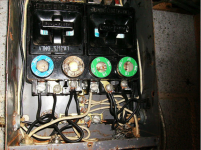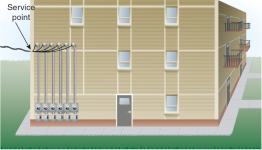729Zoom
Member
- Location
- Los Angeles
- Occupation
- Retired
When I moved into my house 42 years ago, there was already a 100 amp panel with a 100 amp main breaker but I recently found out that the service wire to my house and all my neighbors (who also have 100 amp min panels) is a #8 aluminum, which is only rated for 40 amps! I checked my historical usage as far back as I could on the utility site and bought an emporium energy monitor and found I have never pulled more than 30 amps at one time and, most of the time, I am pulling only 10-20 amps total. I think because I have all gas appliances, just two of us and we don't use a lot. So, it seems the #8 is more than enough.
BUT, we recently had to replace the panel when one of the bus bars went bad and we lost power. Our electrician replaced it with one that would let us get solar in the future without having to redo it. But it has a 200 amp breaker and I was thinking he should have put in a 100 amp breaker like I had before. I read that downgrading breakers is not uncommon. But now that this is already done and the utility company has already come and locked the meter, we would have to have them out to do that again to either downgrade the breaker or ask for a service upgrade, which we don't really need and hate to pay for that.
My thinking is if the service wire was undersized for the 100 amp panel and breaker we had and it never had issues over 42+ years, that a 200 amp breaker won't make any difference? And I should just keep it in case we do go to solar in the future? But, I wanted to get input from others. thanks.
BUT, we recently had to replace the panel when one of the bus bars went bad and we lost power. Our electrician replaced it with one that would let us get solar in the future without having to redo it. But it has a 200 amp breaker and I was thinking he should have put in a 100 amp breaker like I had before. I read that downgrading breakers is not uncommon. But now that this is already done and the utility company has already come and locked the meter, we would have to have them out to do that again to either downgrade the breaker or ask for a service upgrade, which we don't really need and hate to pay for that.
My thinking is if the service wire was undersized for the 100 amp panel and breaker we had and it never had issues over 42+ years, that a 200 amp breaker won't make any difference? And I should just keep it in case we do go to solar in the future? But, I wanted to get input from others. thanks.


